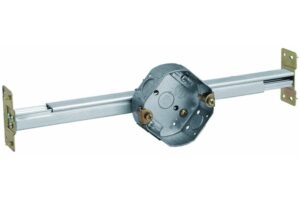Splitting firewood is an essential task for anyone relying on wood-burning stoves or fireplaces. Whether you’re prepping for winter or simply clearing out logs from your yard, knowing how to split wood effectively can save you a lot of time and energy.
In this post, we’re sharing 10 practical tips to help you split firewood like a pro — especially when using reliable tools like the Fiskars Splitting Axe, known for its durability and efficiency.
1. Choose the Right Tool
The tool you use significantly affects the quality of your work. While traditional axes and mauls still work, modern innovations like the Fiskars Splitting Axe offer better ergonomics, a sharper blade, and lightweight design, allowing you to split logs with less force and more precision.
2. Work With Seasoned Wood
Splitting green or freshly cut wood is far more difficult than splitting seasoned wood. Allow your logs to dry for at least six months. Seasoned wood is lighter, cracks more easily, and burns better.
3. Use a Solid Splitting Surface
Avoid splitting wood directly on the ground. Instead, place your log on a large, flat splitting stump. This not only protects your axe but also helps direct force more efficiently into the wood.
4. Target the Cracks
If your log already has visible cracks, start there. Hitting these weak spots will reduce resistance and split the wood more easily. A quality tool like the Fiskars Splitting Axe makes it easier to follow these natural fault lines.
5. Stand With the Right Posture
Maintain a firm, balanced stance with feet shoulder-width apart. Raise the axe over your shoulder and swing using both arms in a controlled, downward motion. Avoid overexertion — the tool should do most of the work.
6. Dress for Safety
Wear safety goggles, gloves, steel-toe boots, and non-slip clothing. Even though the Fiskars Splitting Axe is designed with safety in mind, it’s still a sharp tool that demands caution.
7. Avoid Knotted Wood
Knots in the wood make splitting much harder. If possible, cut around or avoid knotted sections altogether. If you must split them, use extra force and aim just off-center of the knot.
8. Keep Your Axe Sharp
A dull axe increases the risk of accidents and requires more effort to split wood. Regularly check the blade for sharpness. The Fiskars Splitting Axe comes with a hardened steel blade that stays sharp longer, but maintenance is still essential.
9. Store Wood Properly
After splitting, stack your firewood in a well-ventilated area protected from rain and ground moisture. Good airflow helps continue the drying process, making your logs more efficient when burned.
10. Work With the Weather
Avoid splitting wood on rainy or icy days when the logs are slippery. Choose dry, cool days with minimal wind. This will give you better grip and stability when swinging your axe.
Why Choose a Fiskars Splitting Axe?
The Fiskars Splitting Axe stands out for its balance of power and precision. It features a perfectly weighted head, non-slip handle, and a shock-absorbing design that reduces fatigue. Whether you’re splitting a few logs or an entire cord of firewood, this tool makes the job easier and safer.
Frequently Asked Questions (FAQs) — Fiskars Splitting Axe
Q1: What is a Fiskars Splitting Axe used for?
A: The Fiskars Splitting Axe is specifically designed for splitting logs. Its sharp, wedge-shaped blade and balanced design make it efficient for turning large wood pieces into manageable firewood.
Q2: How is a Fiskars Splitting Axe different from a regular axe?
A: Unlike a standard chopping axe, the Fiskars Splitting Axe has a specialized head geometry and longer handle for better leverage. It’s optimized for splitting wood along the grain rather than chopping across it.
Q3: What sizes are available for the Fiskars Splitting Axe?
A: Fiskars offers a variety of sizes including the X11, X17, X25, and X27 models, each suited for different log sizes and user preferences. The X27, for example, is ideal for taller users and larger logs.
Q4: Is the Fiskars Splitting Axe suitable for beginners?
A: Yes, it’s a great option for beginners due to its lightweight design, shock-absorbing handle, and easy-to-maintain blade. Its ergonomic features reduce fatigue and make splitting more efficient.
Q5: Can the Fiskars axe be used to chop trees?
A: No, it’s not recommended. Splitting axes like Fiskars are meant for splitting logs. For felling trees, a chopping axe or hatchet designed for cross-cutting is more appropriate.
Q6: How do I maintain a Fiskars Splitting Axe?
A: Regularly clean the blade and handle after use. Sharpen the edge using a sharpening tool or file when dull. Store the axe in a dry place and use the blade cover to prevent damage.
Q7: Is the Fiskars Splitting Axe durable?
A: Absolutely. It features a hardened forged steel blade, a FiberComp® handle that’s virtually unbreakable, and a weather-resistant coating—making it highly durable for long-term use.
Q8: What type of wood is best split with a Fiskars axe?
A: The axe is effective on all types of seasoned firewood, including hardwoods like oak, maple, and hickory, as well as softer woods like pine and birch.
Q9: Does the Fiskars axe come with a warranty?
A: Yes. Fiskars typically offers a full lifetime warranty on its axes, covering manufacturing defects and performance issues under normal use.
Q10: Where can I buy a genuine Fiskars Splitting Axe?
A: Genuine Fiskars axes can be purchased from hardware stores, outdoor equipment retailers, and trusted online platforms like Shop Miners Hardware
Final Thoughts
Splitting firewood doesn’t have to be exhausting or frustrating. With the right technique, safety practices, and high-quality tools like the Fiskars Splitting Axe, you can streamline the entire process. Follow the tips above to improve your efficiency, stay safe, and prepare your woodpile faster than ever



